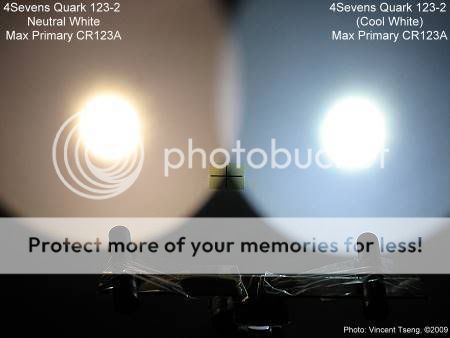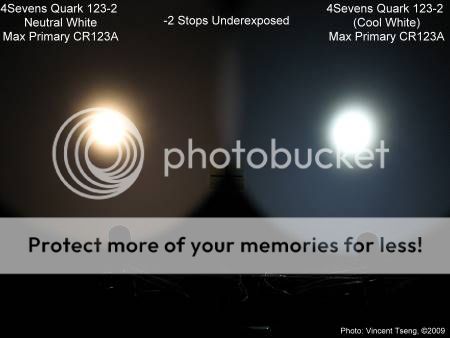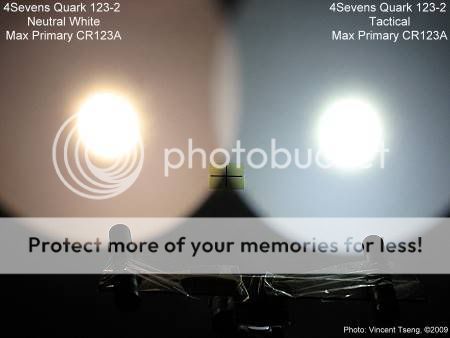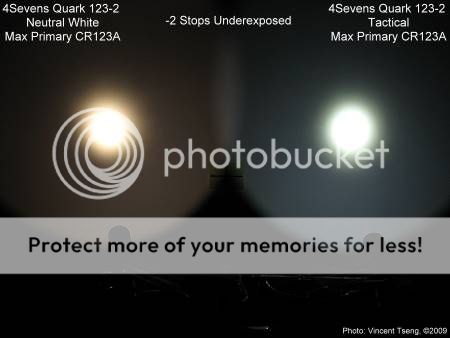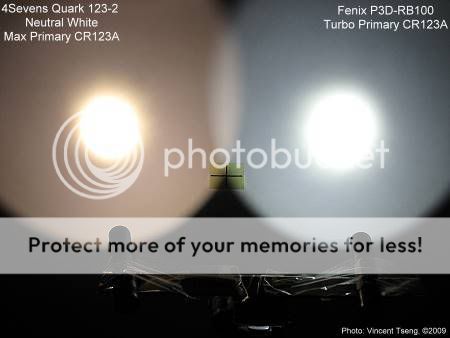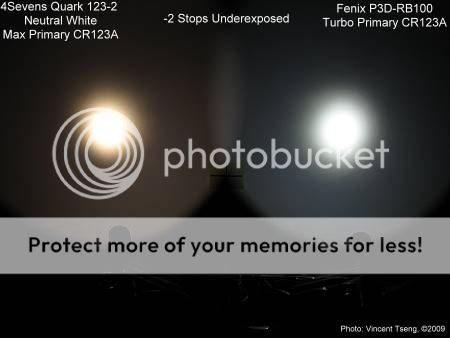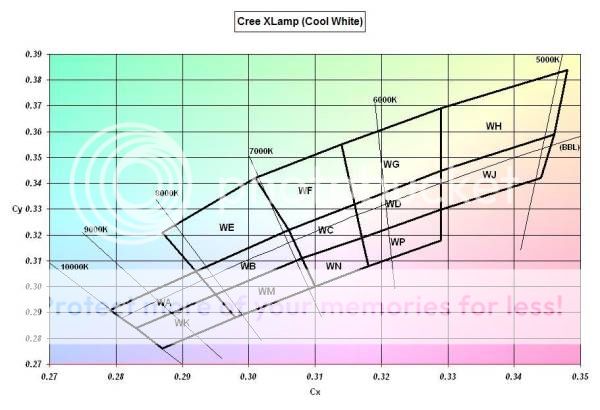I am a mineral collector and i am trying different things to photograph mineral specimens. Sometimes I need to put a spot of light to backlight a transparent or translucent crystal. Sometimes i want to shine light in a specific orientation relative to the crystallographic axes of the crystal.
I have been trying to find good flashlights for these purposes, and i hoping you could give me some advice on what to buy and where.
One of the keys is a spot beam and a pure white (neutral) light. Mag lights are too warm and it seems a lot of the led lights are too blue. I was lucky when i bought an Energizer Hardcase 2 AAA Inspection Light, because the light turned out to be very white (neutral). This model doesn't focus, so the light is sometimes too dispersed, but the color is good. Sometimes this light puts out too much light for my needs. Interestingly, I just bought another of these and the light was blue tinted! Arrrg! Although the led looks the same (square and flat) they must have changed the LED.
I would really like to get a goose neck model and bought a husky brand gooseneck light from home depot. It is way too blue.
If you have any recommendations for the following, I'd really appreciate it:
1) A small goose neck flashlight with a pure white (neutral) light.
2) A small flashlight with the light at the end of a rigid rod and the light is inside an adjustable swivel housing. This would allow me to precisely position the light behind something I was trying to photograph.
3) Another flashlight like my "old" Energizer Hardcase 2 AAA Inspection Light (bought at Home Depot in Tucson AZ in Feb 2009) which has plenty of power but a really white (neutral) light. I'd prefer one that can really focus the beam.
Thanks in advance for any recommendations you can make.
Sorry if you have already seen this post but I wanted to move this up to see if I can get someone to answer my question.
I am a mineral collector and i am trying different things to photograph mineral specimens. Sometimes I need to put a spot of light to backlight a transparent or translucent crystal. Sometimes i want to shine light in a specific orientation relative to the crystallographic axes of the crystal.
I have been trying to find good flashlights for these purposes, and i hoping you could give me some advice on what to buy and where.
One of the keys is a spot beam and a pure white (neutral) light. Mag lights are too warm and it seems a lot of the led lights are too blue. I was lucky when i bought an Energizer Hardcase 2 AAA Inspection Light, because the light turned out to be very white (neutral). This model doesn't focus, so the light is sometimes too dispersed, but the color is good. Sometimes this light puts out too much light for my needs. Interestingly, I just bought another of these and the light was blue tinted! Arrrg! Although the led looks the same (square and flat) they must have changed the LED.
I would really like to get a goose neck model and bought a husky brand gooseneck light from home depot. It is way too blue.
If you have any recommendations for the following, I'd really appreciate it:
1) A small goose neck flashlight with a pure white (neutral) light.
2) A small flashlight with the light at the end of a rigid rod and the light is inside an adjustable swivel housing. This would allow me to precisely position the light behind something I was trying to photograph.
3) Another flashlight like my "old" Energizer Hardcase 2 AAA Inspection Light (bought at Home Depot in Tucson AZ in Feb 2009) which has plenty of power but a really white (neutral) light. I'd prefer one that can really focus the beam.
Thanks in advance for any recommendations you can make.
I have been trying to find good flashlights for these purposes, and i hoping you could give me some advice on what to buy and where.
One of the keys is a spot beam and a pure white (neutral) light. Mag lights are too warm and it seems a lot of the led lights are too blue. I was lucky when i bought an Energizer Hardcase 2 AAA Inspection Light, because the light turned out to be very white (neutral). This model doesn't focus, so the light is sometimes too dispersed, but the color is good. Sometimes this light puts out too much light for my needs. Interestingly, I just bought another of these and the light was blue tinted! Arrrg! Although the led looks the same (square and flat) they must have changed the LED.
I would really like to get a goose neck model and bought a husky brand gooseneck light from home depot. It is way too blue.
If you have any recommendations for the following, I'd really appreciate it:
1) A small goose neck flashlight with a pure white (neutral) light.
2) A small flashlight with the light at the end of a rigid rod and the light is inside an adjustable swivel housing. This would allow me to precisely position the light behind something I was trying to photograph.
3) Another flashlight like my "old" Energizer Hardcase 2 AAA Inspection Light (bought at Home Depot in Tucson AZ in Feb 2009) which has plenty of power but a really white (neutral) light. I'd prefer one that can really focus the beam.
Thanks in advance for any recommendations you can make.
Sorry if you have already seen this post but I wanted to move this up to see if I can get someone to answer my question.
I am a mineral collector and i am trying different things to photograph mineral specimens. Sometimes I need to put a spot of light to backlight a transparent or translucent crystal. Sometimes i want to shine light in a specific orientation relative to the crystallographic axes of the crystal.
I have been trying to find good flashlights for these purposes, and i hoping you could give me some advice on what to buy and where.
One of the keys is a spot beam and a pure white (neutral) light. Mag lights are too warm and it seems a lot of the led lights are too blue. I was lucky when i bought an Energizer Hardcase 2 AAA Inspection Light, because the light turned out to be very white (neutral). This model doesn't focus, so the light is sometimes too dispersed, but the color is good. Sometimes this light puts out too much light for my needs. Interestingly, I just bought another of these and the light was blue tinted! Arrrg! Although the led looks the same (square and flat) they must have changed the LED.
I would really like to get a goose neck model and bought a husky brand gooseneck light from home depot. It is way too blue.
If you have any recommendations for the following, I'd really appreciate it:
1) A small goose neck flashlight with a pure white (neutral) light.
2) A small flashlight with the light at the end of a rigid rod and the light is inside an adjustable swivel housing. This would allow me to precisely position the light behind something I was trying to photograph.
3) Another flashlight like my "old" Energizer Hardcase 2 AAA Inspection Light (bought at Home Depot in Tucson AZ in Feb 2009) which has plenty of power but a really white (neutral) light. I'd prefer one that can really focus the beam.
Thanks in advance for any recommendations you can make.
Last edited by a moderator:


